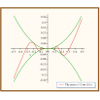Analysis Seminar
In the applied sciences one is often confronted with free
boundaries, which arise when the solution to a problem consists of a
pair: a function u (often satisfying a partial differential equation
(PDE)), and a set where this function has a specific behavior. Two
central issues in the study of free boundary problems and related
problems in calculus of variations and geometric measure theory are:
(1) What is the optimal regularity of the solution u?
(2) How smooth is the free boundary (or how smooth is a certain set
related to u)?
In this talk, I will overview recent developments in obstacle type
problems and almost minimizers of Bernoulli-type functionals,
illustrating techniques that can be used to tackle questions (1) and (2)
in various settings.
The study of the classical obstacle problem - one of the most renowned
free boundary problems - began in the ’60s with the pioneering works
of G. Stampacchia, H. Lewy and J. L. Lions. During the past five
decades, it has led to beautiful and deep developments in the calculus
of variations and geometric partial differential equations. Nowadays
obstacle type problems continue to offer many challenges and their study
is as active as ever.
While the classical obstacle problem arises from a minimization problem
(as many other PDEs do), minimizing problems with noise lead to the
notion of almost minimizers. Interestingly, though deeply connected to
"standard" free boundary problems, almost minimizers do not satisfy a
PDE as minimizers do, requiring additional tools from geometric measure
theory to address (1) and (2).
